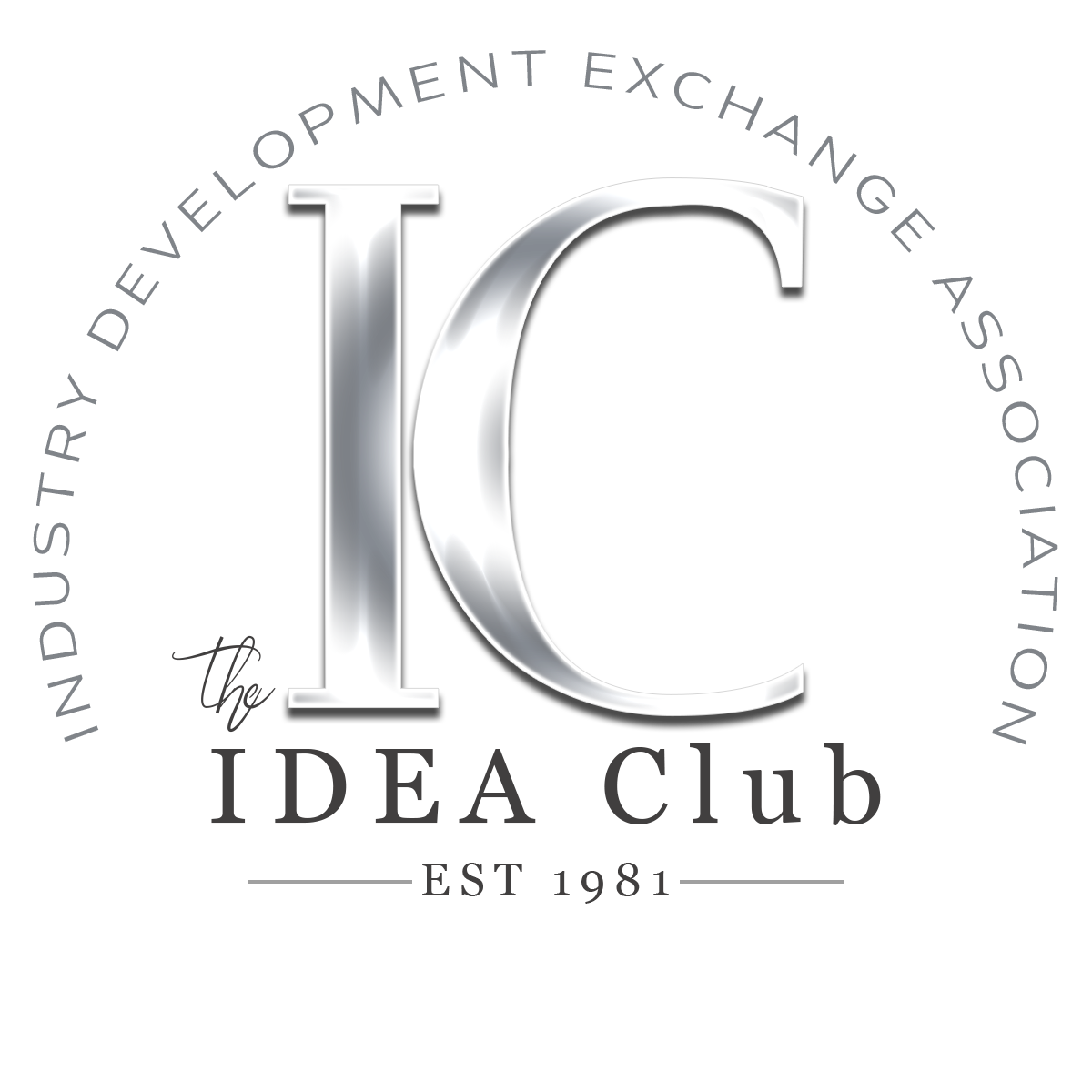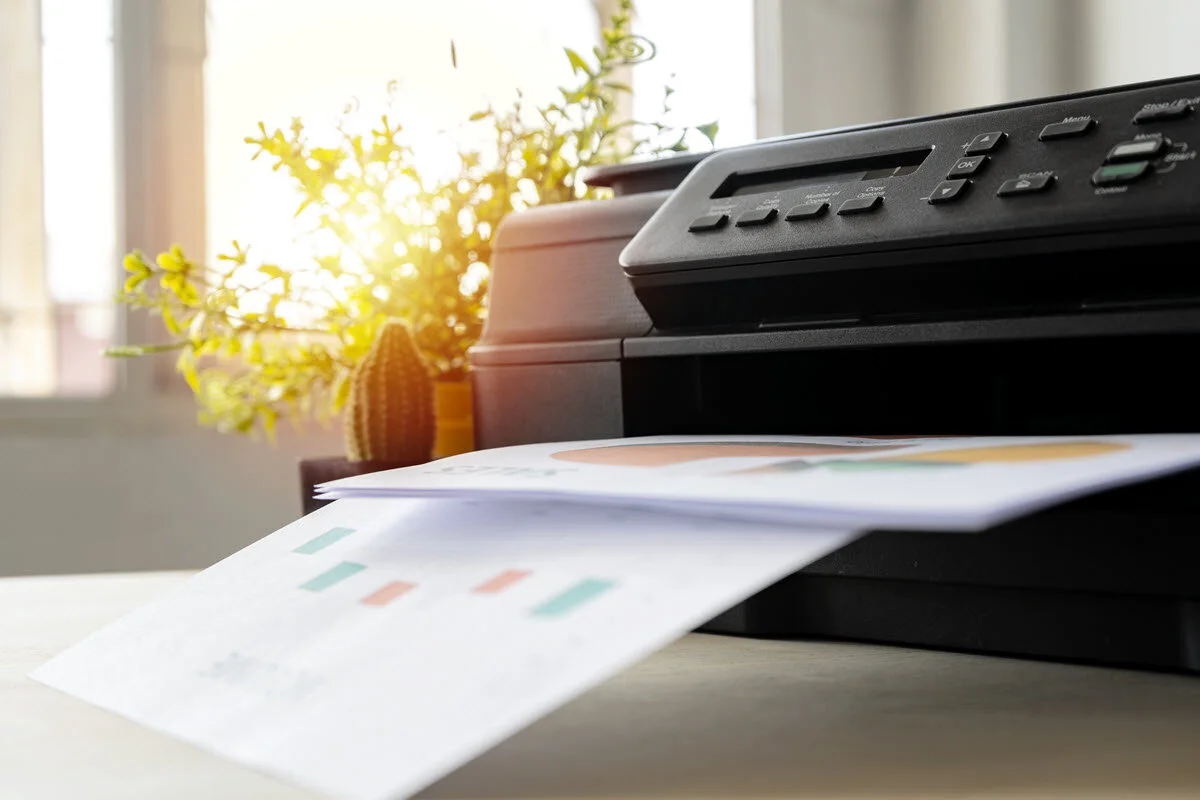laser jet
As incredible as it may seem, laser printer technology preceded inkjet technology in the consumer market. While working at a Xerox research center in the late 1960s, Gary Starkweather combined laser technology with a xerographic copier. By 1981, Xerox released an office version of the laser printer known as the Xerox 9700 Laser Printer. However, it was Canon partnered with Apple Computer and Hewlett-Packard in 1984 that released the HP LaserJet, a consumer version of the laser printer.
inkjet
There isn’t a single inventor of inkjet printing. The history and creation of inkjet printing are shared between Hewlett-Packard, Epson, and Cannon. While the concept was developed in the 1950s, it wasn’t until the late 1970s that inkjet printers could reproduce computer generated images.
Interestingly, a man by the name of John Vaught, working for HP in Silicon Valley, helped the HP team tasked to create an inkjet printer when a coffee percolator inspired him. Just as the water was heated to spread evenly over the coffee grounds, Vaught believed that by heating the ink, it could then be efficiently and uniformly applied to the desired medium.
After decades of development, the inkjet printer finally appeared on the consumer market in the late 1980s. The final obstacles that held inkjet back were creating a controlled flow of ink and preventing the print head from clogging with dry ink. Both Cannon and Hewlett-Packard overcame these obstacles, and the inkjet printer hit the consumer market.
ink cartridges
Each printer uses a specific printer ink cartridge, most often one each of black and color. Each cartridge is given an identifying number and lists the model number of each printer in which it can be used. While each printer manufacturer recommends its own brand of printer ink cartridge, it is possible to refill the cartridge yourself, or purchase a refilled, remanufactured or a compatible cartridge.
There are two types of refilled cartridges: You can do it yourself with a kit that allows you to refill your own cartridge. Refill kits are available at a very low price and are sometimes the choice of those who don’t mind doing the filling in order to save money. The other alternative is to buy a refilled cartridge from a manufacturer. This method involves drilling, filling and sealing an empty cartridge.
iNKJET VS. LASER JET
Many consumers have asked the very same question: should I get an inkjet or laser printer? There are many factors to consider and to help you decide, it’s impossible not to talk about each one. So in order to answer your question of should you get inkjet vs laser, let’s dive right in.
First, let me give you the short of it. The biggest differences between inkjet and laser printers is that an inkjet printer uses ink, is suitable for low volume printing, and is the traditional choice of home users, while a laser printer uses toner, is ideal for high volume printing, is mostly utilized in office settings but is also suitable and is a more economical choice for home use.
If you’re looking for a home printer for occasional printing, most people would advice you to get an inkjet printer. However, a common complaint with inkjet printers is that the ink dries up if you don’t use it often. With that said, if you have the budget for it, I strongly suggest you get an affordably priced laser printer instead; the toner used by laser printers doesn’t dry up.
But if you’ll be printing a small volume of documents and colored images regularly, inkjet printers will get the job done. Laser printers are known to be more durable and can print large quantities of monochrome and colored documents frequently.
Though laser printers were originally built for office use, they are now growing in popularity as a home printer for economical reasons. If you’ll be printing large volumes of documents, a laser printer is the best machine for you. Laser printers can print high volumes of documents daily without even batting an eyelash (if a printer ever had one…or many).
printing in color
Color laser printers are good for everyday color printing but if you’re looking to print professional high resolution photos, go with a photo inkjet printer. High quality photo inkjet printers are specially engineered to produce vividly detailed photos with the tonal variety and deeper blacks that photographers and creatives need. Many professional photo inkjet printers use pigment-based ink which is more fade-resistant and works with a wide variety of art paper types as well as a range of paper sizes but you can also find dye-based photo inkjet printers if you don’t require the longevity of pigment ink.
technology
Inkjet printers spray liquid ink through microscopic nozzles onto paper as pictured below.
Laser printers, on the other hand, have a drum unit that fuses (or melts) toner powder onto paper with heat.
So, one printer type uses ink, the other uses powder. Inkjet printers sprays ink droplets while laser printers melt toner powder onto paper. With this difference in application between the two inkjet and laser printer types, it’s a common belief that smudging is more common with inkjet printers than laser. That’s not to say all inkjet printers do. Inkjet printers that use pigment based ink aren’t likely to smudge whereas dye-based ink require a longer drying time for the ink to set. And this can also largely depend on what paper you’re printing on. Some paper types absorb ink better while some don’t.
print quality
Print quality depends on the output you need.
In a nutshell, if you need to print vivid exhibit-quality photos, look for a good professional photo inkjet printer that produces high resolution images. If what you need is a reliable printer that can keep printing sharp documents, a laser printer is what you need.
A common perception is that inkjet printers are better with colored images, and laser printers are best for black and white text. The technology behind the two printers also determine the limitations they have when it comes to the quality of their print results. This difference manifests itself more noticeably when printing high-resolution professional photographs.
Advancements in printer technology have allowed color laser printers to now produce pretty impressive colored photos as well. Although inkjet printers still win over laser when it comes to high resolution photos boasting incredible color tones and depth, color laser printers are now an option to consider for those looking to print medium-quality colored images while enjoying the reliability, endurance, and economic benefits of a laser printer.
Monochrome Laser printers: Excellent for text and documents
Color Laser Printers: Excellent for text, documents, and can print medium-quality color images (ie. family photos for personal use).
Photo Inkjet Printers: Great for printing high quality photos with wide color range and tonal depth. Best when printing photo gallery prints.
print speed
Laser printers are built to accommodate the demands of a workplace so they are engineered to print faster (between 15 to 100 pages per minute, or ppm), while inkjet printers print slower at about 16 ppm. Since laser printers are faster, they are able to produce more documents compared to inkjet printers and therefore have a higher monthly print volume.
Laser Printers: 15 to 100 pages/minute
Inkjet Printers: 16 pages/minute
PRINTER VS CARTRIDGE COST
The upfront cost of a laser printer may seem like its biggest weakness. After all, inkjet printers have a much lower upfront cost with newer models priced low while laser printers are significantly more expensive –still twice the price of the cheapest inkjet.
When compared with laser printers, inkjet printers have a lower price partly because —
Inkjet printers have a minimum life span of 3 years,
Whereas laser printers have a lifespan of at least 5 years
— and this is all depends on frequency of use.
In the same way that inkjet and laser printers widely differ in price, cartridge prices for a laser and inkjet printer also widely differ — and for good reason. Laser printer cartridges, also known as toner cartridges, can print significantly more pages than any inkjet cartridge so they are generally more expensive. In spite of this, however, you will find yourself spending less per page with a laser printer.
TIPS FOR EXTENDING CARTRIDGE LIFE
1. Adjust The Printer Settings: Your first defense against a premature loss of ink is adjusting your printer settings. Switching a few of your pre-programmed settings will still provide you with legible, clear documents while using far less ink.
2. Change the Quality Level: Almost all printers offer multiple print quality levels and speeds that range from fine to normal. Many even offer a “Draft” mode, or “Fast Normal,” for anything that is not necessarily official, such as a business letter. This is the best mode to use in order to save ink and extend the life of each cartridge. You should use these settings exclusively unless you are printing photographs or a presentation.
3. Color Printing vs. Grayscale: If color is not necessary, it is always best to change your printing preference to what is known as “grayscale,” or black-and-white. You still get a readable, quality document or image that uses much less ink and will extend the life of your cartridge.
4. Use Print Preview: take advantage of your print preview feature. All computers have this setting, and it will provide you with an on-screen rendition of the page that you are about to print before it is sent to the printer.
5. Ignore Low Ink Warnings: You should always try to ignore the first low ink warnings that you get from your printer. Just like the gas tank in your car, there is always a bit more ink left when your printer's sensor first detects that you are approaching empty status. The sensor errs on the side of caution, though some customers believe that the printer's conservative estimates are motivated by the greed of printer manufacturers. While this may or may not be true, you are guaranteed to have more than enough ink remaining post-warning to print at least a hundred more pages. This doesn't mean that you shouldn't have a new cartridge handy at the first indication that your current cartridge is low, but you shouldn't have to replace it until the quality of your printed pages has obviously diminished. It’s obvious when your ink cartridges actually need to be replaced, as you will see streaks, smears, or fading in your text and images.
The IDEA Club
CRAIG REAHL
KITTINGER BUSINESS MACHINES
Kittinger Business Machines has provided Quality Office Machine Sales, Service & Supplies for over 50 years. With our complete line of Digital Office Solutions, Kittinger is your One Stop Shop for everything your office needs in Office Equipment.
Kittinger Business Machines provide Digital Color and Black and White Copy Systems for Orlando and surrounding areas. Our New Digital Copiers will reduce your expenses by reducing your overall cost per copy and reduce downtime on your equipment.















